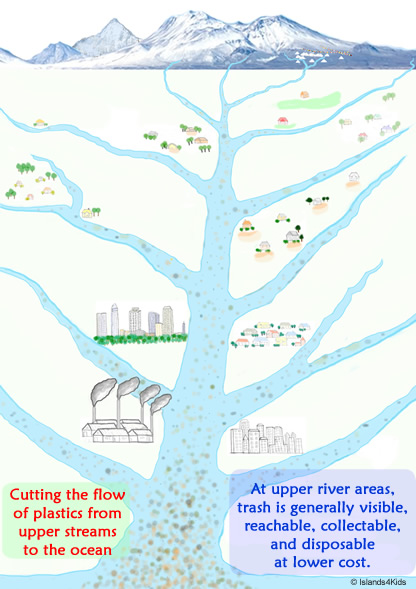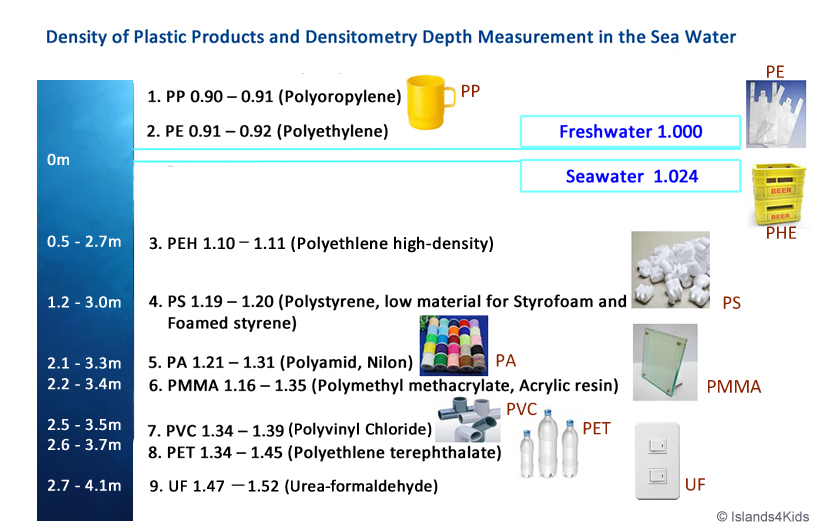|

 |
|
 |
 |
Why is Marine Debris everyone's problem? |
| |
Everyday, all over the world, people are making so much trash in their daily lives. |
| |
|
| |
There is so much trash being produced at such a fast pace that trash disposal systems cannot keep up to take care of them all.
The issue of discharging plastic wastes into local rivers is happening at every country, occurring independent of economic development or political ideologies.
This is not an issue belonging to one country or one area of the world. We all take equal responsibility for marine debris.
Once in ocean, trash is carried by ocean currents and can travel from one country to coastlines and beaches of another country across the world.
By ocean currents, some marine debirs travel thousands of miles away from the original countries where they are thrown.
|

Photo authorised: PIXTA P-005912eaf0-006e73e |
|
| |
 |
| |
|
 |
Warming Climate Reveals and Advances Downstream Flow of Debris. |
| |
This is becoming increasingly so at even the base camp of Mt. Everest and along the Himalayan Mountains as climate change further accelerates the rate of glacial melting, creating more paths for debris to travel downstream.
Many of the disposed trash on streets, walking trails, river banks are flowing into the ocean and are creating a huge amount of marine debris that affect the ecological system of another continent more than 6 thousand miles away. Even the trash at the base camp of the Mt. Everest can end up in the ocean in 50 years as climate changes continues.
However, this upper stream cause-and-effect sequence may be hard to imagine for people living in upper stream areas because the amount of plastic in the river they see are on a day to day basis as opposed to an accumulated amount.
Therefore, we need to create a straight forward strategy to attain comprehensive collaboration to ending the flow of debris into stream systems because at upper stream areas, trash is generally visible, reachable, collectable and disposable at lower costs.
This is what ISLANDS4KIDS is committed to solve in the "Upper Streams Outreach Program".
|
 |
|
 |
| |
 |
Correlation between the type of plastic and their depth in the ocean |
| |
Only a small portion of plastic marine debris are visible and are floating on the surface of the ocean, while a larger proportion of plastic debris sink below.
|
| |
A. Specific gravity: |
| |
This diagram illustrates the approximate depth distribution of each plastic product based on the value of specific gravity. Specific gravity is the density of the object divided by the density of water. |
| |
 |
| |
|
| |
B. Filler: |
| |
|
All plastic products are not made of a single material, but the amalgamation of many other compound additives called “filler” to increase usability or improve design flexibility. If the ratio of filler changes, the value of specific gravity changes as well. The depth distribution is always closely interconnected with the specific gravity of each plastic product. |
| |
|
| |
C. Accumulation of micro-organisms: |
| |
|
Marine creatures, like algae diatoms, plants, and larval, settle on surfaces of plastic marine debris, increasing the weight of debris and directly changing the existing depth. (Please also see the Colonization Mechanism of Living Organisms on Marine Debris) |
| |
|
| |
D. Salinity: |
| |
|
Change in salinity (amount of salt dissolved in water) concentration at different depths of water also influences the existing depth of plastic marine debris. |
| |
|
| |
E. Plastic marine debris exists at any depth of the ocean: |
| |
|
They are found at almost any depth, from the ocean surface to the bottom of the 10,000 meter (6 miles) deep sea bed. |
|
| |
 |

|
 |
|
|
 |
 |